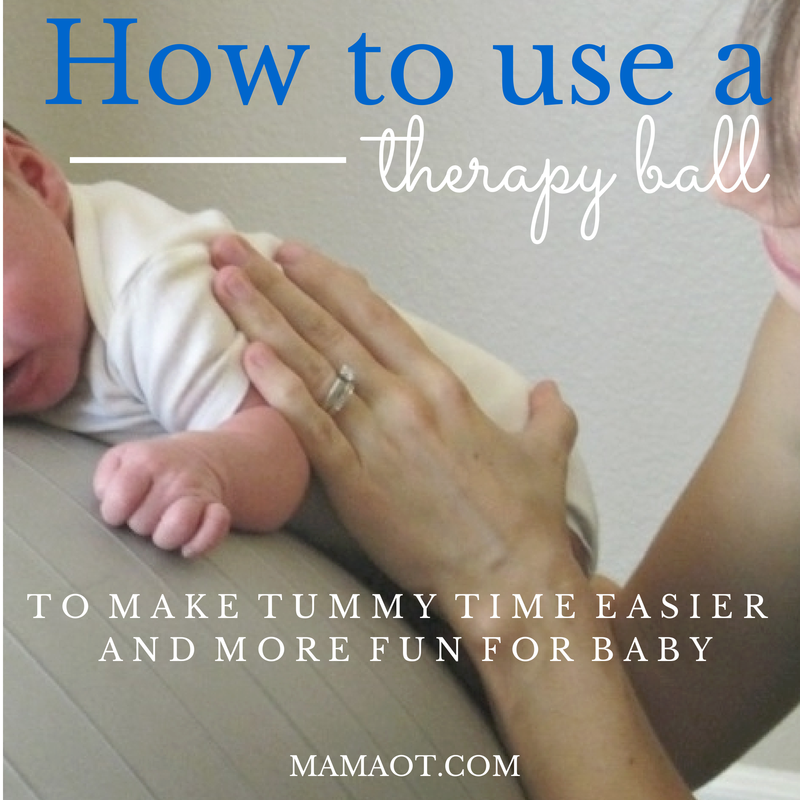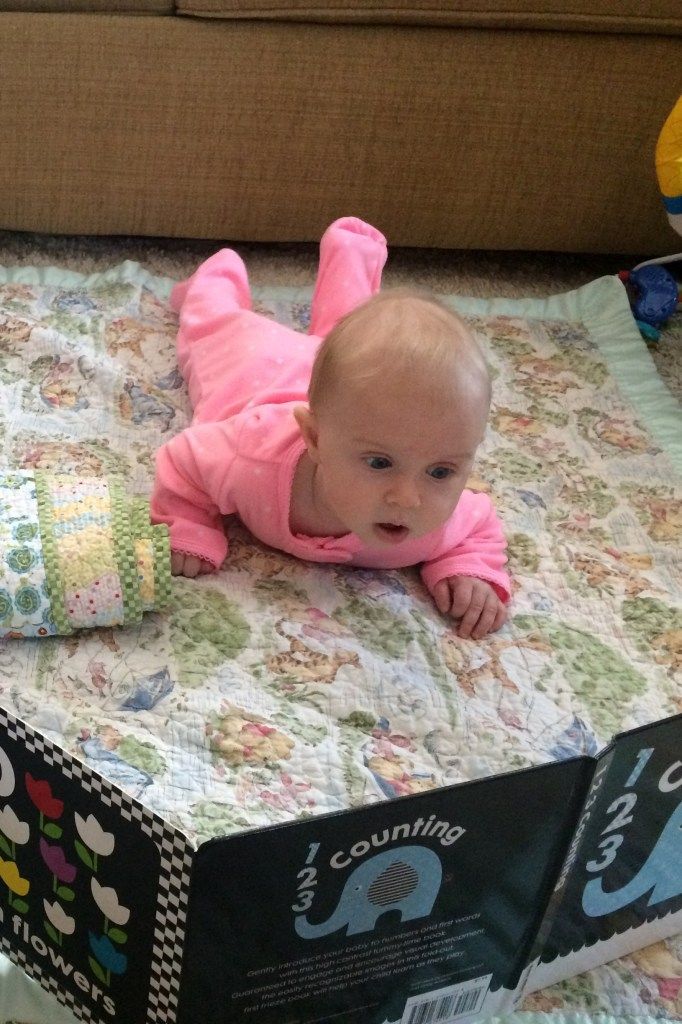Tummy time for babies after feeding
Tummy time for your baby
Many health professionals will mention tummy time when asking about your baby’s development. Tummy time involves placing your baby on their stomach when they are awake. This is very important to help strengthen your baby’s muscles and protect the shape of their head.
It is normal for young babies to be unhappy on their tummy as their heads are heavy and tummy time is hard for them. Even though babies may feel uncomfortable initially, it is important to keep trying.
Why does my baby need to do tummy time?Placing your baby on their tummy helps them in a number of ways, including:
- developing head control (strengthens the muscles of their neck)
- strengthening the muscles used to move their bodies so they can learn to roll, sit and crawl. This includes the muscles of their shoulders and back
- helping to protect their head shape so they don’t develop a misshapen head (called Plagiocephaly)
Tummy time can be safely started from birth. It has been found that babies who start regular tummy time early like this position more and can manage it for longer periods of time.
Try to do tummy time regularly throughout the day and make it a part of your baby’s regular activity. Start with short periods of tummy time (one to two minutes) and slowly increase the time as your baby becomes stronger (aiming for 10 to 15 minutes at least three times a day, by around four months of age). Babies with big heads or those who were born early often find tummy time more difficult and may need more time to improve at it.
How can I do tummy time with my baby?There are a number of different ways to do tummy time with your baby. Do not leave your baby alone or unsupervised during any tummy time positions.
These positions may be helpful if your baby does not like being directly on their tummy or has colic or reflux. Please see our Kids Health Info fact sheets on
Reflux (GOR) and GORD and
Crying and unsettled babies - colic for more information.
Please see our Kids Health Info fact sheets on
Reflux (GOR) and GORD and
Crying and unsettled babies - colic for more information.
| Chest to chest, in a chair | Over your lap, adult seated on a chair or on the floor |
| Chest to chest, on the floor | Baby over your Arm |
| Over a rolled towel – placed under baby’s chest, arms forward | On the play mat, lots of play |
| Over a gym ball | |
Please note: remember to put your baby on their back for sleep safety - never sleep your baby on their tummy or side.
- Supervised tummy time is best when your baby is awake, not too tired and not too soon after a feed (which may cause vomiting or discomfort)
- In the beginning, your baby may not enjoy tummy time very much and may only tolerate a minute or two. Don’t give up – it will get better with daily practice. If your baby is crying when placed on their tummy, try to distract them with play. Examples of play include getting down on the floor with your baby, using toys such as rattles and mirrors, and singing and talking to them
- You could also try a different position to see if they find this any easier. Different positions for tummy time are shown above
- Your baby will find tummy time easier if they can take their weight through their elbows.
 You may need to help them with this or support them there. Try to use a play mat that isn’t too silky, soft or slippery and a surface that isn’t too soft
You may need to help them with this or support them there. Try to use a play mat that isn’t too silky, soft or slippery and a surface that isn’t too soft - Newborn babies can move their heads by themselves but not control their position. You may need to help them position their head in the middle
- To help your baby lift their head, gently press down on their bottom. This gives them something solid to push off. For adults, this is similar to when someone holds your feet when you are doing a sit up
Remember that it is normal for your baby to find tummy time difficult to begin with. If you remain concerned or are worried about any of the following, please seek medical advice from your GP, Maternal and Child Health nurse, paediatrician or a paediatric physiotherapist:
- Your baby isn’t improving at tummy time after six to eight weeks of age
- Your baby feels very stiff or very floppy
- If your baby is six weeks old and not making eye contact or focussing on toys
- If your baby is developing a misshapen head or a strong preference to have their head on one side
- If your baby is not moving both sides of their body the same
- Tummy time helps to strengthen a baby’s neck, shoulder and back muscles
- Tummy time helps to protect your baby’s head shape
- You must always supervise your baby when they are on their tummy and during any tummy time positions
- It is recommended you start tummy time from birth and do it regularly
- It is normal for babies to find tummy time difficult to begin with.
 Use a variety of positions and tips listed to help them enjoy it more and get better at it
Use a variety of positions and tips listed to help them enjoy it more and get better at it - Babies with big heads or those who were born early often find tummy time more difficult and may need more time to improve at it
- You must always sleep your baby on their back to reduce the risk of Sudden Infant Death Syndrome (SIDS)
- Kids Health Info fact sheet: Plagiocephaly - misshapen head
- Kids Health Info fact sheet: Reflux (GOR) and GORD
- Kids Health Info fact sheet: Crying and unsettled babies - colic
- Baby’s Head Control fact sheet: Physiotherapy Department handout
- Raising Children Network - Tummy time for babies: in pictures
- Red Nose safe sleeping
Common questions our doctors are asked
At what age is it no longer necessary to put my baby on their tummy?
We recommend you continue with tummy time until your baby starts to crawl or can get onto and off their tummy themselves. Once your baby is doing this, they will be doing their own tummy time. Remember, it is safe to start tummy time from birth.
Once your baby is doing this, they will be doing their own tummy time. Remember, it is safe to start tummy time from birth.
If my baby has reflux/vomits a lot, should I put them on their tummy?
If your baby has reflux, you can and should continue with tummy time. Try the positions where your baby is more upright such as on your chest, over your legs or on a gym ball. Remember to leave 20 to 30 minutes after a feed before placing your baby on their tummy to reduce vomiting and discomfort.
What do I do if my baby dislikes tummy time?
It is very normal for young babies to be unhappy on their tummy as their heads are heavy and tummy time is hard for them. Babies need to be motivated when on their tummy and can be motivated through play. Examples of play include getting down on the floor with your baby, using toys such as rattles and mirrors and singing and talking to them.
Babies need to be motivated when on their tummy and can be motivated through play. Examples of play include getting down on the floor with your baby, using toys such as rattles and mirrors and singing and talking to them.
Use some of the tips listed on this page to make tummy time more enjoyable and a little easier for them. The more upright your baby is when they are on their tummy, the easier it will be for them. Remember, every little bit helps and your baby should slowly improve and start to enjoy being on their tummy. If they continue to have difficulties, please talk to your GP, Maternal and Child Health nurse, paediatrician or a paediatric physiotherapist
What do I do if my baby is developing a flat head or unusual head shape?
Baby’s heads are very soft and, if they are in one position more than others, they can develop a flat spot. This is called Plagiocephaly. Please read our
Kids Health Info fact sheet on Plagiocephaly – misshapen head if you are concerned about this.
This is called Plagiocephaly. Please read our
Kids Health Info fact sheet on Plagiocephaly – misshapen head if you are concerned about this.
Developed by The Royal Children's Hospital Physiotherapy Department. We acknowledge the input of RCH consumers and carers.
Developed December 2020
Kids Health Info is supported by The Royal Children’s Hospital Foundation. To donate, visit
www. rchfoundation.org.au.
rchfoundation.org.au.
Why Tummy Time Is so Important for Babies
Development,Parenting,Most Recent
February 05, 2020
So you just left the hospital overwhelmed with new information on how to best care for your new baby. As you get accustomed to your child’s immediate needs — meals, changing diapers, learning to safely strap them into their car seat — it is easy to forget the importance of early initiation of tummy time.
As pediatric physical therapists, some of the most common questions we receive from parents are “When should we start tummy time?” and “How much time should my child spend on their tummy?” We also hear “My child hates tummy time. What should I do?” If you also have felt this way, you are not alone.
What Is Tummy Time?
Tummy time is a term used to describe the action of placing your baby on their stomach when they are awake and being supervised. Your infant should never participate in tummy time when they are asleep or unsupervised. Infants should sleep positioned on their backs to prevent what is known as sudden infant death syndrome (SIDS).
Your infant should never participate in tummy time when they are asleep or unsupervised. Infants should sleep positioned on their backs to prevent what is known as sudden infant death syndrome (SIDS).
Remember this helpful phrase: “Back to sleep, tummy to play.”
Why Is It Important?
Tummy time is essential for developing neck muscle strength and control, as well as stability within the shoulder girdles. Positioning your child on their stomach allows them to gain the strength and coordination they need for future motor skills like rolling, sitting, crawling and walking.
Delayed onset of developmental milestones has been associated with a lack of tummy time. It fosters visual-motor development, cognitive functioning and oral-motor skills important for feeding and speech development. Tummy time is the most important method to prevent conditions frequently seen with children who spend sustained periods of time on their back such as torticollis and abnormal skull/facial shaping (plagiocephaly and hemihypoplasia). It also allows for appropriate jaw development.
It also allows for appropriate jaw development.
When Should I Start?
You can start tummy time when your child is as young as one week old. The best way to initiate this is by laying your child on your chest when you are in a reclined position. This allows them to adjust to tummy time in an environment where they feel safe. As they do so, you can recline further until you are lying on your back and they are on their stomach. As soon as possible, transition to tummy time positioned on a firm surface, such as a mat on the floor.
How Much Time on Their Tummy?
The first tummy time sessions can last for only a few minutes, depending on your child’s tolerance. Work up to 80 cumulative minutes a day by the time they are three months old. The more, the better!
What if They Hate It?
Begin slowly and be persistent, even if they don’t appear to enjoy it. Start with what they are able to tolerate and gradually add more time. Provide them with reassurance and encouragement. Be aware of the difference between your baby crying because they are angry and crying because they’re distressed. Babies learn early that crying gets them picked up. Consider allowing them to cry for 30 seconds before doing so if it’s an angry cry.
Provide them with reassurance and encouragement. Be aware of the difference between your baby crying because they are angry and crying because they’re distressed. Babies learn early that crying gets them picked up. Consider allowing them to cry for 30 seconds before doing so if it’s an angry cry.
Throughout tummy time, monitor for pain or distress symptoms (abnormal breathing, a change in facial color) and terminate immediately if you notice this behavior. Allow them time to be soothed and reassured prior to resuming.
You may make tummy time easier by doing it with your baby on your chest or positioned over your lap. Visual work helps! Provide a toy for them to interact with. Toys are best positioned within arm’s reach and near their waist. Once they adjust to tummy time while on your chest or lap, you may progress to positioning them on a blanket on the floor. You also can roll up a blanket and place under their chest to provide additional support.
What if They Have Reflux?
Many infants who experience reflux (frequently spitting up after feeding) have a poor tolerance of tummy time. To improve their comfort level, we recommend waiting at least 30 minutes after their feeding to position them on their tummy. It is helpful to gradually transition them to their stomach by allowing them to play while positioned on their back. After a few minutes, gradually roll them to their side (preferably the left). Allow them to play in that position for a few minutes before helping them roll to play while on their stomach.
To improve their comfort level, we recommend waiting at least 30 minutes after their feeding to position them on their tummy. It is helpful to gradually transition them to their stomach by allowing them to play while positioned on their back. After a few minutes, gradually roll them to their side (preferably the left). Allow them to play in that position for a few minutes before helping them roll to play while on their stomach.
Be encouraged that despite any chaos you may feel as an early parent, you are doing a great job! As therapists, we repeatedly observe that once a child adjusts to tummy-time positioning, it becomes their preferred position for play.
Be brave and be focused. You can do it!
Are You Interested in Learning More?
Sign up for our e-newsletter for more tips and best practices from pediatricians.
Sign Up Here
Why is tummy time so important for your newborn baby?
HomeHealthWhy is tummy time so important for your newborn baby?
When a newborn baby lies on its back, it is natural and habitual for parents. When it comes to accustoming a child to the stomach, mothers have reasonable fears - the baby still does not hold his head and has poor control over his body, it seems to his mother that he will be uncomfortable on his stomach. But these are useless fears - pediatricians say that laying a child on his stomach is useful and important: in this position, the child develops motor skills better and learns to hold his head faster. nine0003
When it comes to accustoming a child to the stomach, mothers have reasonable fears - the baby still does not hold his head and has poor control over his body, it seems to his mother that he will be uncomfortable on his stomach. But these are useless fears - pediatricians say that laying a child on his stomach is useful and important: in this position, the child develops motor skills better and learns to hold his head faster. nine0003
At the advertiser's address, in Health · 08 Apr. 2022, 01:00 · 0 Comments
For a long time it was believed that you should not put the baby on the stomach until the umbilical wound closes. Modern pediatrics has revised its approach to child development. Neonatologists advise parents to start laying their baby on their stomach from the first day of life. Most babies tolerate this position very well, and it does not harm the navel. nine0003
Neonatologists advise parents to start laying their baby on their stomach from the first day of life. Most babies tolerate this position very well, and it does not harm the navel. nine0003
Some children do not like to lie in this position, then parents have to teach their babies. This must be done because the position on the tummy is very beneficial for the newborn. You will have to overcome the child's anxiety, his mood and even tears, and in no case should you retreat. Help your baby grow strong, mobile and healthy.
Why is it necessary to lay the baby on the stomach?
A one-month-old baby who is used to lying on his tummy, the world around him seems wider and more interesting. Exercise also has a positive effect on the physical condition of the child. Let's mark all the useful points:
-
Lying on his stomach, the child trains the muscles of the neck in order to quickly and easily learn to hold his head.
 Other muscles of the body are also tensed, the shoulder girdle, arms and abs are strengthened. Getting used to leaning on his hands, the newborn is preparing to crawl
Other muscles of the body are also tensed, the shoulder girdle, arms and abs are strengthened. Getting used to leaning on his hands, the newborn is preparing to crawl -
When the baby lies on his stomach, he increases the angle of view, sees his hands, notices toys and develops a grasping reflex. At the same time, the mental abilities of the child are stimulated
nine0023 -
The bones of the moon child's skull are soft and may flatten from prolonged lying on the back. To prevent the baby's head from looking flat, lay it on the stomach more often.
-
Strengthening the neck muscles helps to avoid torticollis in the newborn. Having laid the child on his stomach, approach him from different sides so that he tries to return to you.
-
Being on the stomach, the child massages the stomach and trains the abdominal muscles, thereby improving metabolism.
 Gas is expelled more easily and the risk of colic is reduced. The formation of an umbilical hernia is prevented. nine0003
Gas is expelled more easily and the risk of colic is reduced. The formation of an umbilical hernia is prevented. nine0003
Rules for performing exercises for children
You cannot just take and turn the baby on his stomach, several conditions must be observed. Since the position is new for a vulnerable baby, mommy must do everything correctly and accurately. Follow the following rules:
-
Place the child on a firm and level surface. Use a regular or changing table for this. You can cover the floor with a sheet or blanket and put the child on it, as long as there are no drafts and the floor is warm. A rigid support will help the child develop motor skills
-
Do not give him or her any food before putting the baby on his stomach. This position can cause regurgitation, and after feeding, babies want to sleep rather than exercise.
 For example, you know that after 30 minutes it is time for your baby to eat infant formula, then this period is the optimal time to put him on his tummy.
For example, you know that after 30 minutes it is time for your baby to eat infant formula, then this period is the optimal time to put him on his tummy. -
Be sure to be close to the newborn. Do not let the baby bury his nose in a blanket or pillow, remove them. Watch his position, do not leave him unattended even for a minute - this is especially important at the age of 2-3 months, when the child actively rolls over
-
Pediatricians recommend putting the baby naked on the tummy. Check how many degrees in the room where your baby is, so as not to catch a cold
Since the pose involves muscle training, never lay the baby out after meals or before bed. Exercise is performed only when the child is awake.
How to teach a child to lie on his tummy?
If your little one does not like to lie on his tummy, is naughty and resists, try to teach him to do this. Remember that this position is necessary for the child to develop properly. Be patient, act consistently, with an understanding of what you want to achieve. Try doing it like this:
Remember that this position is necessary for the child to develop properly. Be patient, act consistently, with an understanding of what you want to achieve. Try doing it like this:
-
Lay the baby out for a very short time, no more than 10 seconds. The main thing is that during this time the mood of the baby does not deteriorate, and he feels comfortable.
-
Do the first exercises on the stomach: this is familiar to the baby, and this position will not make him feel insecure.
-
Gradually increase the time of lying on your stomach, but be sure to watch for when the baby begins to worry and let you know that he is tired of lying like that. nine0003
-
Turn exercise into a daily, obligatory ritual. Do it at a certain time so that the baby is ready for it.

-
Complement lying on your stomach with pleasant treatments: massage and stroking. The attention of the baby will switch, and he will happily accept the new position.
-
Lead the habituation process without coercion. Do not insist if the baby is naughty - just try every day and little by little, perhaps he will like it soon. nine0003
-
Choose the right time to practice. A lethargic, hungry or sleepy baby is unlikely to be happy to do what bothers him.
-
To reduce discomfort, engage the child's attention with auditory and visual stimuli. Bright toys and squeakers are suitable for this.
-
Change the texture and color of the surface the baby will sit on. Little tricks will help distract the child and improve his tactile skills.
 nine0003
nine0003
Gradually your baby will like to lie on his tummy. If mom and dad make an effort, then very soon the baby will delight them with their successes.
The "lying on the tummy" position brings maximum benefits
If all your efforts do not lead to positive results, the baby continues to resist and does not want to lie on the tummy, offer him other options.
Regular activities with your child will lead you to success - especially since at a certain age, children themselves begin to like not only to lie down, but also to sleep on their stomachs. The once unloved position turns into the most convenient and comfortable. nine0003
In the first days and weeks after birth, the baby moves very little. The main postures are lying on your back or on your side, with your legs tucked up to your stomach. Young mothers are very afraid of injuring the child. To prevent this from happening, it is important to follow the recommendations of doctors.
Pediatricians recommend that parents do "tummy games" 2-3 times a day for 3-5 minutes each time. In early childhood, lying on the tummy can last only a few minutes until the child gets tired.
When the child shows interest in tummy time, increase the time and frequency of exercise. After 3-4 months, try lying on your tummy for about 20 minutes a day. If your baby is happy and alert, let him stay on his tummy for as long as he likes - 40 to 60 minutes a day. nine0003
Being on your tummy is a very important activity, try to make the most of this time. Make these moments fun and bright for your newborn, try to make him feel comfortable, distract and entertain him. The more your baby will lie on his tummy, the faster he will learn to control his body and begin to surprise with new successes.
Disclaimer:
The views expressed on this page are those of the author and not of The Portugal News. nine0003
More in Health
Hypermobility - what is it?
On site Health, Lifestyle - Jan 07 2023, 17:01
Fibromyalgia: more than pain and fatigue.

On the Health website - Jan 06 2023, 08:01
nine0004What are cluster headaches?
On site Health, Lifestyle - Dec 31 2022, 18:01
Support "The Portugal News"
We are proud to provide our readers from around the world with independent, honest and unbiased news for free – both online and in print.
Our dedicated team supports the local community, foreign residents and visitors of all nationalities through our newspaper, website, social media and our newsletter. nine0003
We appreciate that not everyone can afford to pay for our services but if you are able to, we ask you to support The Portugal News by making a contribution – no matter how small .
Be the first to comment on this article
More in Health
Hypermobility - what is it?
On site Health, Lifestyle - Jan 07 2023, 17:01 nine0003
Fibromyalgia: more than pain and fatigue.

On the Health website - Jan 06 2023, 08:01
What are cluster headaches?
On site Health, Lifestyle - Dec 31 2022, 18:01
Popular
Thomas Beckett
On site Curiosity, Lifestyle - Jan 08 2023, 10:01
Algarve fare increase questioned
Online News, Portugal, Algarve - Jan 08 2023, 09:03
The biggest cheese festival in Portugal
Online News, Portugal, Events, Food and Drink - Jan 08 2023, 08:03
Other articles Health
Video games and cognition in young children
On site Health, Lifestyle - Dec 30 2022, 08:01 nine0003
How does PEG-MGF affect dental health?
On the Health website - Dec 28 2022, 13:43
Excuse me? What did you say?
On site Health, Lifestyle - Dec 27 2022, 17:01
Enjoy this Christmas with moderation and health
On site Health, Lifestyle - Dec 23 2022, 11:01
How to avoid a cold when everyone you know has a cold
On site Health, Lifestyle - Dec 18 2022, 16:01
Oncosexuality and ovarian cancer
On site Health, Lifestyle - Dec 16 2022, 08:01 nine0003
View all Health articles
Pediatrician Olga Ustinova, answering questions from TIA readers, told how to swaddle, apply to the breast and lay the newborn on the stomach
May 22 Chief physician of the Children's City Clinical Hospital No. 1, doctor of the highest category, candidate of medical sciences, pediatrician, gastroenterologist Olga Ustinova in an interview with TIA spoke about the nutrition and digestive problems of a child in the first year of life. Readers have asked many questions in the comments. Answering a question from a reader marusya, Olga Ustinova told whether it is necessary to swaddle babies and how to do it correctly, how to lay a newborn on her stomach and how to hold a baby while breastfeeding. nine0003
1, doctor of the highest category, candidate of medical sciences, pediatrician, gastroenterologist Olga Ustinova in an interview with TIA spoke about the nutrition and digestive problems of a child in the first year of life. Readers have asked many questions in the comments. Answering a question from a reader marusya, Olga Ustinova told whether it is necessary to swaddle babies and how to do it correctly, how to lay a newborn on her stomach and how to hold a baby while breastfeeding. nine0003
Swaddling
Mothers quite often ask the question: "Is it necessary to swaddle a newborn?". Here it is necessary to decide individually with each child. If the baby is very active, then in the first 4 months of life, when the physiological hypertonicity of the limbs persists, it is better to swaddle. But, for example, from two months you can only swaddle the legs, leaving the baby's arms free. The child wants to move, especially from the age of three months, they begin to reach for rattles, and parents should not interfere with development. There are children who from birth do not want to lie in diapers, but want to freely place their arms and legs in the crib, they easily get used to vests and sliders. Mom will see this right away, you should not go across such a desire of the child. nine0003
There are children who from birth do not want to lie in diapers, but want to freely place their arms and legs in the crib, they easily get used to vests and sliders. Mom will see this right away, you should not go across such a desire of the child. nine0003
How to swaddle your baby properly
You need to swaddle slowly, without sudden movements.
Place two diapers on the changing table, one on top of the other. We will fix the legs with the top diaper.
The child lies on the back, on diapers. The arms are movable.
We stretch the legs so that it is comfortable for the child.
We wrap the right edge of the upper diaper around the right leg, the left - around the left. nine0128 We bend the lower end of the diaper and wrap the legs around them, we make a kind of cocoon in which the baby will be warm and comfortable.
Then we wrap the handles with the bottom diaper. We stretch the right handle along the body and wrap the diaper around the body. Then we repeat everything with the left handle. Next, lift the torso of the baby from below and wrap it.
We stretch the right handle along the body and wrap the diaper around the body. Then we repeat everything with the left handle. Next, lift the torso of the baby from below and wrap it.
A swaddled baby is comfortable to feed and hold in a column
Pediatrician Olga Ustinova, together with Yekaterina Filatova, a nurse from the neonatal pathology department of the Children's City Clinical Hospital No. 1, showed how to properly position a child in a column so that the baby burps air. nine0003
- Sometimes the air leaves quickly, but sometimes the mother has to wait. Breathing or spitting up (when air comes out with breast milk or formula) is accompanied by a characteristic sound. We are waiting for the air to come out twice, after which the baby can be put in the crib. The newborn sleeps without a pillow, the head must be turned to one side, changing side after each feeding (either to the left or to the right).
It is better to breastfeed your baby while sitting rather than lying down
From the point of view of the physiology of the child, during breastfeeding, the mother should sit, not lie down. Doctor Olga Ustinova and nurse Ekaterina Filatova told and showed how to properly hold the baby during breastfeeding.
Doctor Olga Ustinova and nurse Ekaterina Filatova told and showed how to properly hold the baby during breastfeeding.
- The baby's head and neck are on the mother's arm. In contact with the mother's body, feeling her warmth, the baby relaxes and begins to actively open his mouth, making sucking movements. He is ready to eat. The baby begins to suck, the semi-horizontal position helps the milk reach the stomach faster. If the mother has no medical contraindications to sitting feeding, then this position will be optimal. For her own convenience, a woman can put a bench under her foot, put pillows under her elbow and back. The time the baby is at the breast is 10-15 minutes, if the baby sucks sluggishly, then up to half an hour, you should not keep it at the breast longer, otherwise it will become a habit for the baby. Instead of getting used to resting in his crib, the baby will become tame and it will not be easy to wean him from this. nine0251
How to lay the baby on the stomach correctly
It is possible to lay the baby on the stomach from the age of 3 weeks: we start from half a minute and, observing the reaction of the baby, gradually increase the time of lying on the stomach. This position helps the child clear the gastrointestinal tract of excess air.
The most delicate part of the body of a newborn baby is the cervical spine. With one hand we hold the neck, with the other - the stomach and chest - carefully turn the baby on the stomach. We help to turn the head to the left, to the right (alternate side before each feeding) so that the spout does not rest against the surface. Lie down, again fix the neck, tummy and turn over on the back. If the child does not like to lie on his stomach, he reacts to the coup with a cry, you need to contact your pediatrician, a neurologist. Such a reaction may be the result of an injury to the cervical spine.











